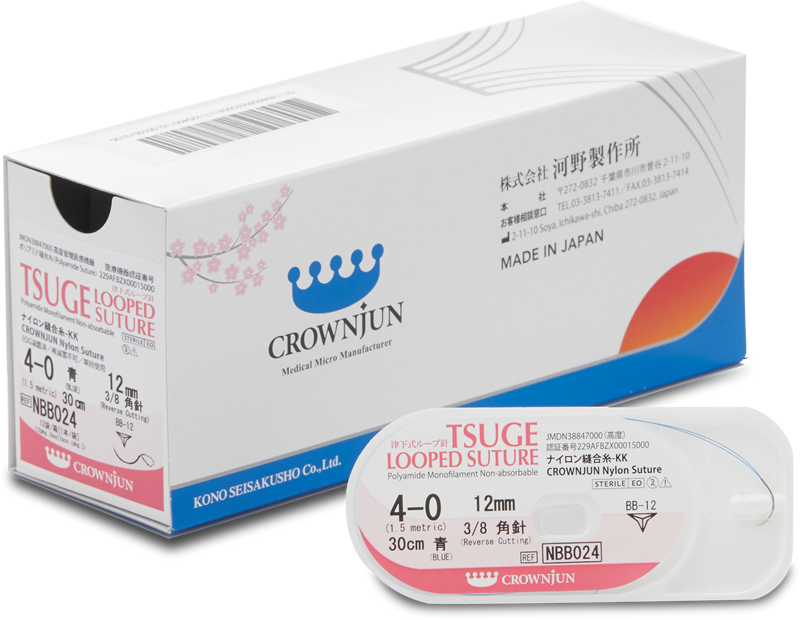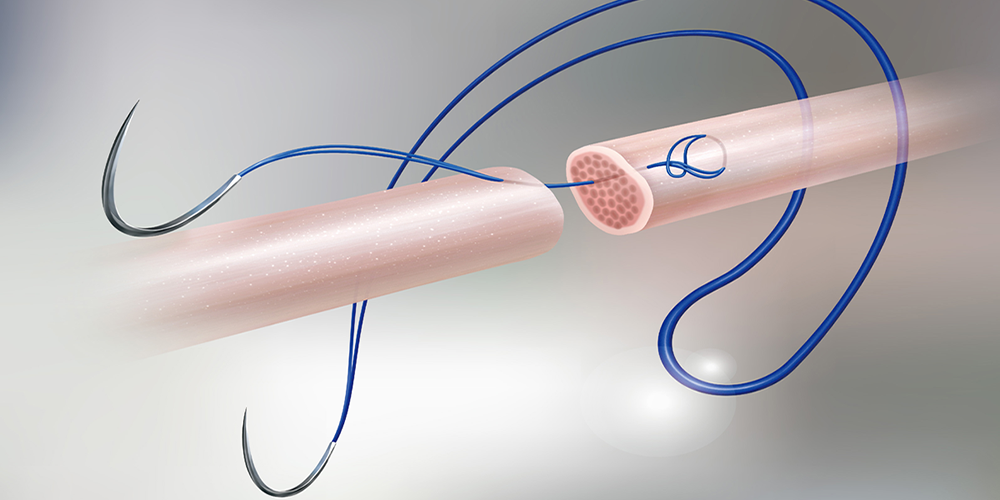TSUGE LOOPED SUTURE
For Tendon and Nerve Repair

The Tsuge suture method involves tenorrhaphy using a loop needle.
The greatest advantage of the Tsuge suture is that minimal disruption of blood circulation inside the tendon compared with other procedures, which promotes the healing of the suture area.
In 1975, Professor Kenya Tsuge of the University of Hiroshima published a technique for repairing tendons using loop suture needles, a technique that became known as“Tsuge suture.”
Tsuge looped suture needles were developed by Kono Seisakusho as a tool for making Tsuge sutures at the request of Professor Kenya Tsuge.
These needles have been used along with Tsuge sutures by surgeons around the world for over 40 years.

Applications
Flexor tendon repair
Flexor tendon injuries
Tendon transplantation
Whole hand surgery

